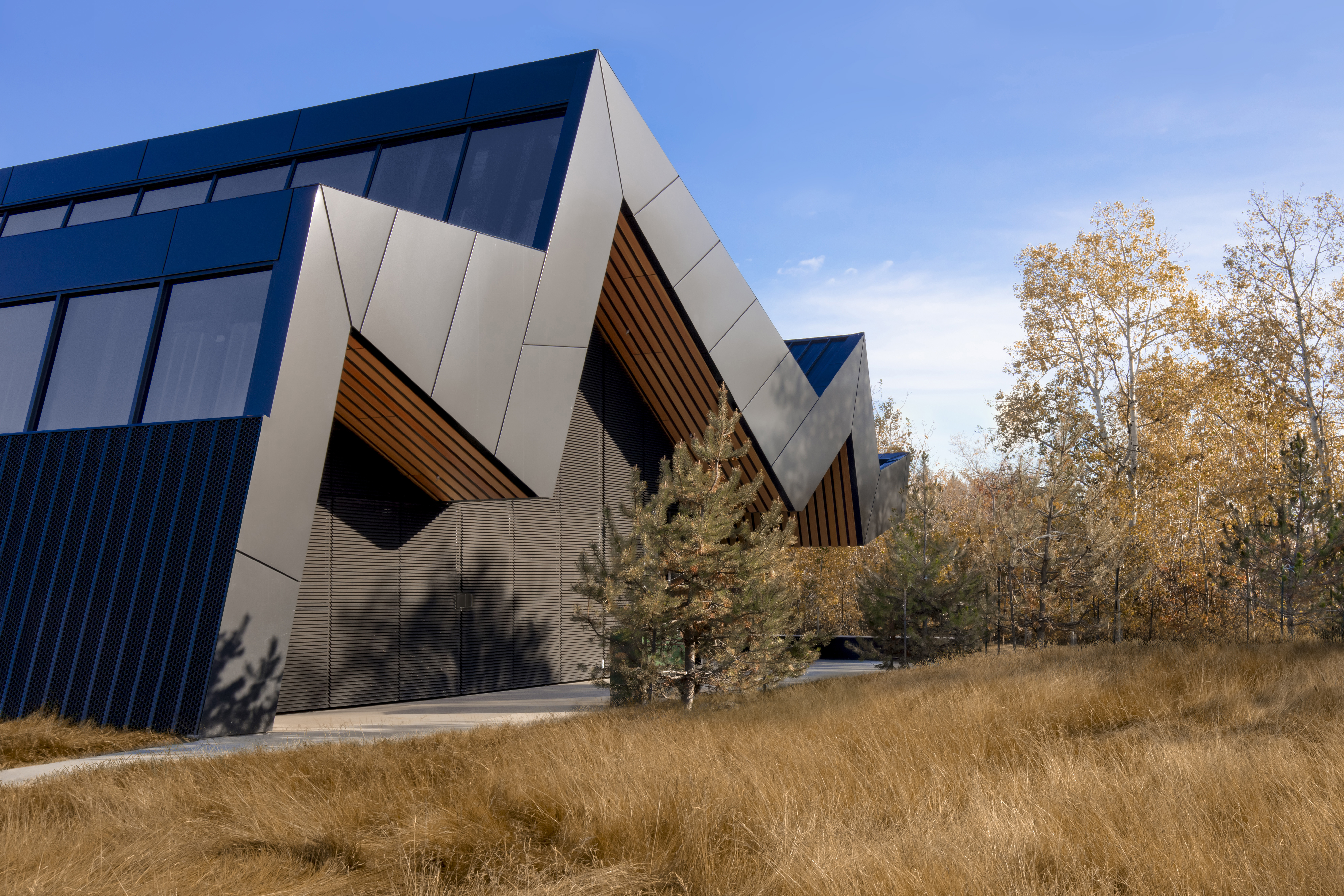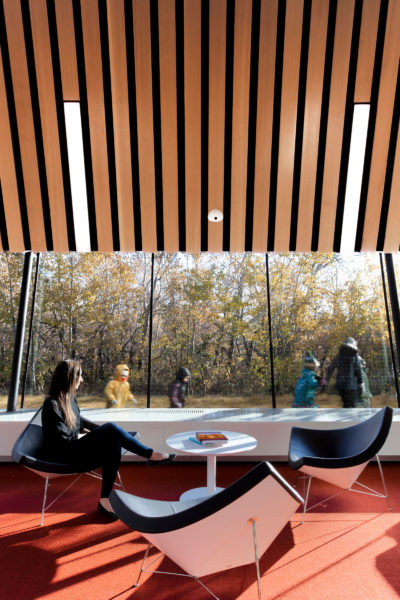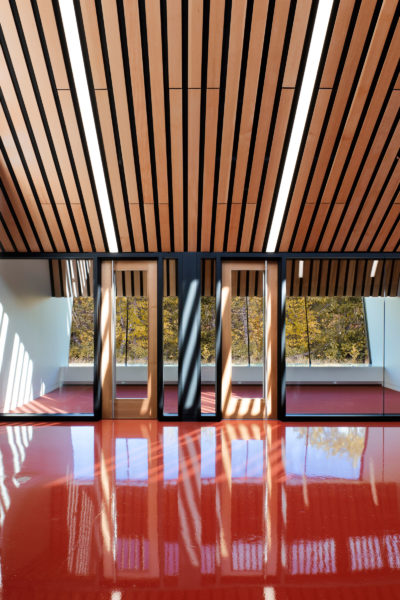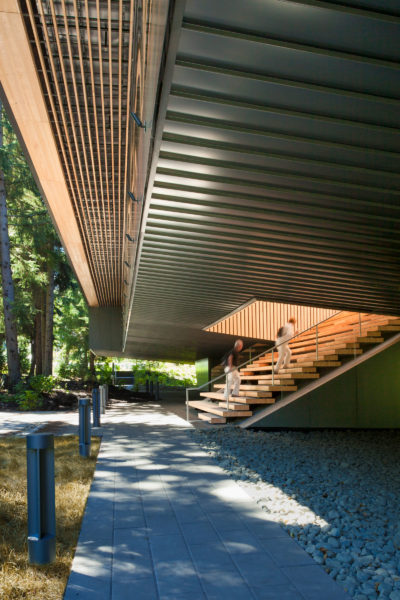Patkau Architects is known for creating innovative, sculptural buildings that result from a search for the “found potential”: aspects of site, culture, materials, and environment that facilitate architecture evocative of circumstance.
Since 1978, Patkau has been recognized with over 80 national and international awards. Defined by sharp, angular intersections, rolling curves and warm wood aesthetics, their innovative portfolio includes private residences, cultural institutions, landscape interventions, and major urban buildings. Patkau Architects’ commitment to innovation is demonstrated through ongoing architectural research, including three published books and numerous articles. Their most recent publication, Material Operations, is available through the Princeton Architectural Press.
Wood’s flexibility allows us to design, model, and construct complex geometric forms with a great degree of precision.
From the studio: “Our decision to build with wood is primarily a response to the unique circumstances identified in each project. In many scenarios, it is the most cost effective option. Opportunities for prefabrication have a profound effect on construction speed, which passes savings on to our clients. The wide familiarity of wood and wood construction also helps to create jobs and reduce the reliance on specialized trades needed during construction. Wood’s low thermal conductivity and efficiency as an insulator helps us to design environmentally responsible buildings that cost less to operate and improve the comfort of occupants in the buildings. Above all, Patkau strives to create buildings that create a unique sense of place.”
Hadaway House
This snow country house is located on a northwest slope overlooking a panoramic view of Whistler valley in southwest British Columbia. Construction is a hybrid of framed systems. Concrete slabs and walls enclose the lower floor while the upper levels are comprised of composite steel and a heavy timber structure with wood-frame infill. The entire structure is sheathed with a monolithic screen of open-spaced ipe boards over conventional roof and wall assemblies. Softwood fir or hemlock were used for framing, and glulam for the pole beams.
Capilano Library
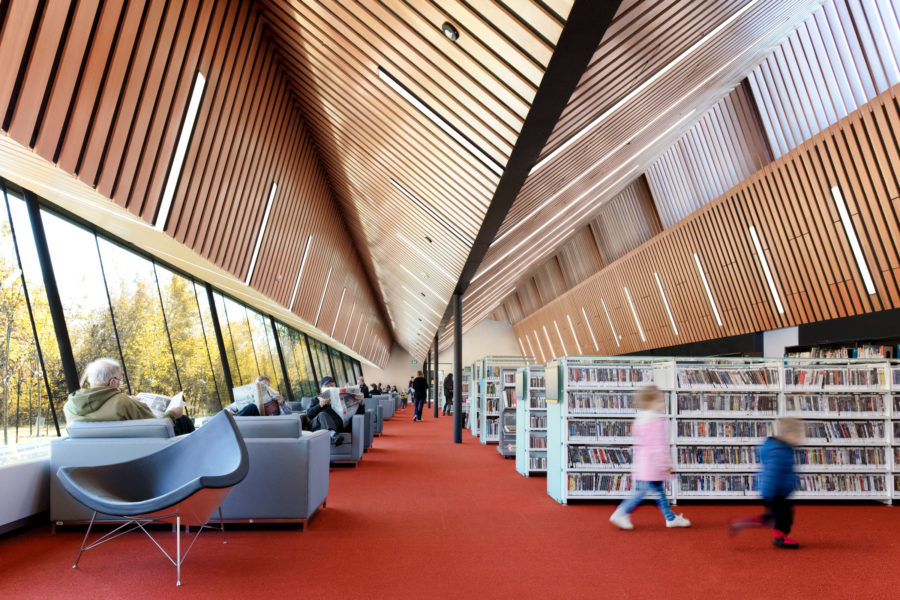
Photo by James Dow / Patkau Architects
This library is inspired by a ravine hidden within dense foliage at the edge of its suburban site. A continuous folded wood roof runs the length of the library, its three peaks corresponding to the three program zones within. Upper and lower planes of the roof are optimized for daylight, acoustics, structure and technical services, striking an irregular profile at each end of the building.
- Photo by James Dow / Patkau Architects
- Photo by James Dow / Patkau Architects
Structural glue-laminated timber panels provide a quick and efficient way to frame the shape of the roof. The 132 feet (9.76 meters) panels span multiple bays, and with plywood, form an effective structural diaphragm. The insulating properties of wood also prevent thermal bridging at the deck, a critical consideration in the prairie climate. The folding wood ceiling is constructed of modular wood panels, each with three Douglas Fir slats measuring 6 inches by 0.7 inches (140 millimeters by 17 millimeters). Besides creating a warm and humane interior, the panels hide the practical elements that often clutter a ceiling. To complement the building’s deciduous backdrop, the library is clad in black aluminum. At the clerestory windows, wood grilles maintain continuity of the finish and diffuse the prairie sunlight as it streams into the interior.
Audain Art Museum
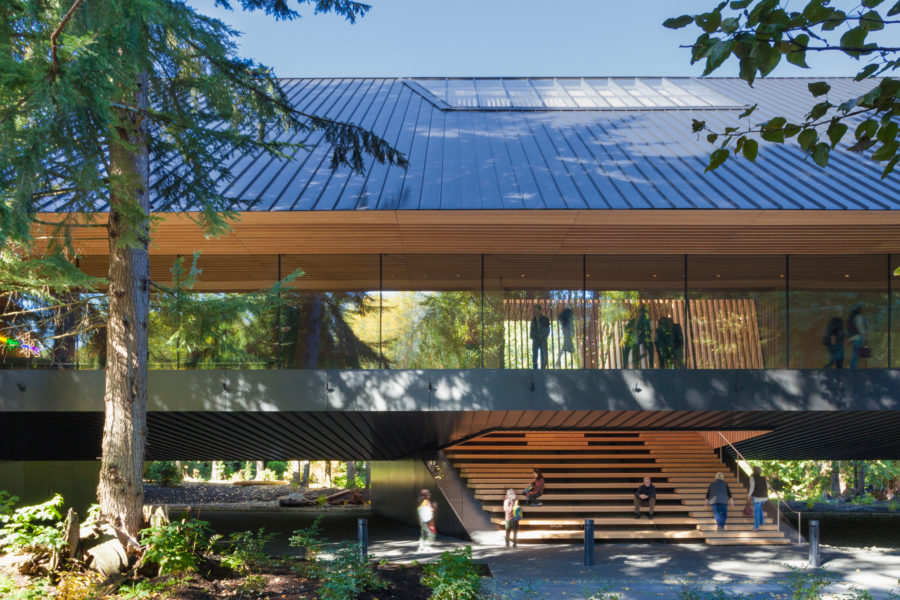
Photo by James Dow / Patkau Architects
The museum’s design molds public spaces and galleries into a linear form within the surrounding forest. The structure is elevated one full story above the ground and crowned with a steeply sloped panelized wood roof containing offices, art storage and temporary exhibition galleries. At entryways and other openings, dark metal is overlaid by a luminous wood casing. Public spaces in the interior use the same wood as interior finish, providing visitors with a warm, calm aesthetic. The roof structure was built using long-span prefabricated engineered wood panels (LSL/Douglas Fir PSL) 7.9 feet (2.4 meters) wide and up to 54 feet (16.5 meters) long. Panels were shop fabricated and pre-membraned to allow rapid enclosure of the steel structure on site regardless of weather conditions.
- Photo by James Dow / Patkau Architects
Academic Wood Tower
This 14-story classroom and office building for the University of Toronto will be one of the tallest timber buildings in the world at more than 260 feet (80 meters) high. The structure—beams, columns, decks, and bracing—is constructed of glue-laminated mass timber. A significant portion of the timber is exposed, revealing aspects of its structural design. The first of these is branching. At the base of the building, braces divide to reconcile the six-bay wood structure of the tower with the five-bay steel structure of the Goldring Centre below. Similarly, at the crown of the building, the braces fan out at the event space—opening the corners to emphasize dramatic views out to the city. Where possible, the structural system is manifest at building-scale, with dramatic super-braces wrapping the perimeter and braced to the core, providing lateral stability.
Glulam slab floor decks maximize clear spans and provide inherent twohour fire-resistance. The envelope is unitized and prefabricated for rapid construction to protect the timber from moisture and fire as the building is assembled. The joints between the panels are airtight, while still allowing for building movement, resulting in a high-performance and constructible envelope. During the design process, alternative solutions to the current code were developed to show that a partially exposed mass timber structure introduces no more risk than conventional tower construction.

